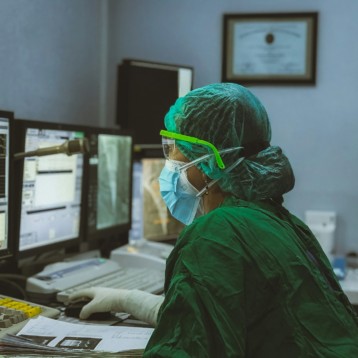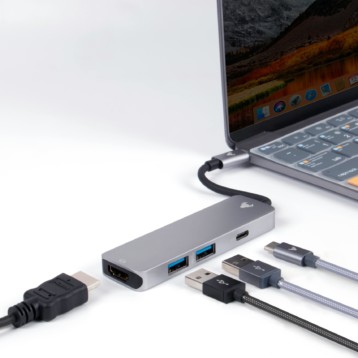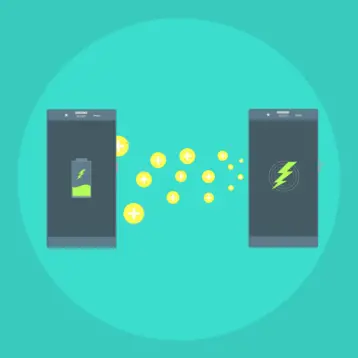The healthcare industry has been slow to adopt emerging technologies, but the potential benefits are vast. The use of emerging technologies is likely to transform the way that healthcare professionals provide care, improve patient outcomes, and reduce costs.
In this article, we will highlight seven emerging technologies that hold great promise for the healthcare industry.
Top 7 Tech Advances in Store for Healthcare
1. Artificial Intelligence (AI)
AI refers to the development of computer systems capable of performing tasks that call for human intelligence, such as problem-solving, decision-making, and language understanding. In healthcare, AI has the potential to alter the way we diagnose and treat diseases. Examples of AI applications in healthcare include
- Precision medicine: This involves tailoring medical treatments to the genetic makeup of patients. AI can help analyze massive amounts of genetic data to identify specific genetic variations that contribute to disease risk. It can also help to develop personalized treatments based on individual genetic profiles.
- Predictive analytics: AI can also be used to identify patients at risk of developing certain medical conditions. For example, AI algorithms can analyze electronic health records to identify patients with a high risk of heart disease. As a result, healthcare providers can intervene early to prevent the development of these conditions.
- Virtual nursing: VN assistants can reduce the workload of nurses by providing patients with virtual support and guidance. These assistants can monitor patient vital signs, answer questions about medications and treatments, and provide emotional support to patients.
2. Internet of Things (IoT)
IoT refers to the interconnectedness of everyday objects through a network of sensors and software. The now popular industrial IoT development, in turn, is the use of IoT technology in industrial settings, which can include healthcare facilities. IoT can transform the way medical organizations deliver care by enabling
- Remote patient monitoring: By adopting IoT, healthcare providers can monitor and control equipment and processes remotely, reducing the need for on-site staff. Remote patient monitoring involves using IoT sensors to monitor patient vital signs from a distance. With IoT-powered solutions, doctors can detect changes in a patient’s health status early, allowing them to intervene before complications arise.
- Smart hospital rooms: These use IoT sensors to adjust room temperature, lighting, and other environmental factors to meet patient needs. Such solutions can help to improve patient comfort and reduce the risk of hospital-acquired infections.
- Smart wearables: Fitness trackers and smartwatches can help patients to monitor their health and share data with healthcare providers. Healthcare providers, in turn, can identify trends and provide personalized treatment plans.
3. Blockchain
Blockchain is a digital ledger technology that enables secure, transparent, and decentralized record-keeping. By reaping the benefits of blockchain, medical organizations can optimize many processes. For example, electronic health records stored on a blockchain can be securely accessed and shared among healthcare providers, reducing the risk of data breaches. Another use case of blockchain is tracking the supply chain of drugs to prevent counterfeit products from entering the system. In clinical trials, blockchain can help to track patient consent, data sharing agreements, and other compliance requirements.
4. 3D Printing
3D printing is a process of creating three-dimensional objects from a digital file. This amazing technology can be of great help in the healthcare industry. Thus, 3D printing can be used to create customized and personalized healthcare solutions. For example, a 3D-printed prosthetic can be customized to fit the specific dimensions of a patient’s limb. Applying this technology can help to improve patient comfort and reduce the risk of complications.
3D printing can also be used to create surgical tools, such as bone drills and scalpels, that are customized to a surgeon’s needs. As a result, doctors can improve the accuracy and precision of surgical procedures.
5. Augmented Reality (AR) and Virtual Reality (VR)
AR and VR technologies involve the use of computer-generated imagery to enhance the real-world environment or create a simulated environment. In healthcare, AR and VR can be applied in many different ways. For example, surgical residents can use VR simulations to practice complex surgical procedures in a low-risk environment. It can help to improve the quality of medical training and lower the risk of complications during real procedures.
Or, AR and VR can also be used to educate patients on their medical conditions and treatments. The result of embracing these technologies is improved patient understanding and adherence to treatment plans. Plus, AR and VR can be used for pain management by distracting patients from painful procedures or providing virtual environments that promote relaxation and stress relief.
6. Nanotechnology
Nanotechnology involves the manipulation of materials on a molecular or atomic scale. This technology can change the way we deliver drugs, treat diseases, and diagnose medical conditions. Thus, nanoparticles are applicable in targeted drug delivery, allowing medications to be delivered directly to diseased cells while reducing side effects on healthy cells. Nanoparticles can also be used for cancer treatments by delivering chemotherapy to tumor cells. Thanks to them, the number of medications needed can be reduced and treatment efficacy can increase.
Nanotechnology can likewise be used to create diagnostic tools capable of detecting medical conditions at an early stage. For example, nanoparticles can be used to detect cancer cells in the bloodstream before they develop into tumors, allowing for earlier intervention and timely treatment.
7. Robotics
Robotics involves the use of machines to perform tasks that are typically performed by humans. Robotics has numerous use cases in the healthcare industry. For instance, surgical robots enhance the accuracy and precision of surgical procedures, reducing the risk of complications and improving patient outcomes. Rehabilitation robots, in turn, assist patients with mobility and reduce the need for human assistance. There are likewise eldercare robots that can provide companionship and support to elderly patients, improving their quality of life.
Summary
The healthcare industry is on the cusp of significant change, thanks to the emergence of technologies like AI, IoT, blockchain, 3D printing, AR, VR, and the like. While the adoption of these technologies presents some challenges for healthcare providers, the benefits far outweigh the challenges.
As these technologies continue to evolve, healthcare professionals need to stay up-to-date with the latest developments and harness their full potential to provide the best possible care for their patients.










